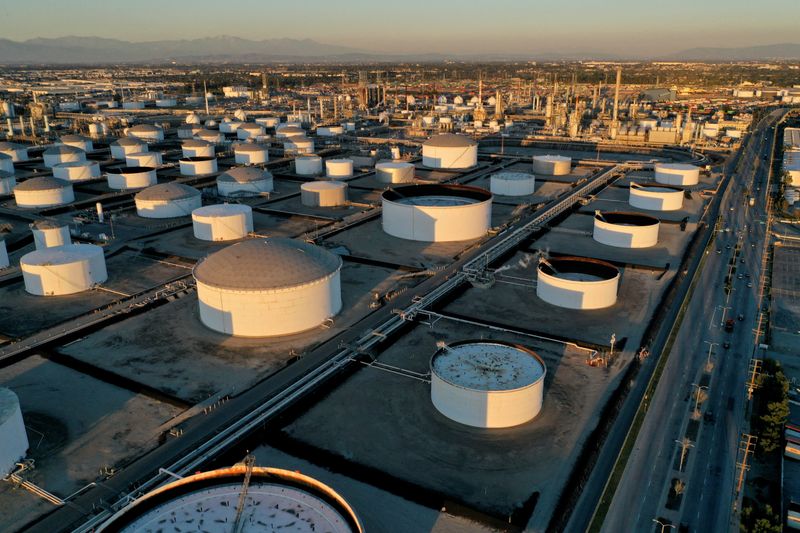By Arathy Somasekhar
HOUSTON (Reuters) -Oil prices ended 2% lower on Tuesday as talks progressed between Russia and Ukraine to end their weeks-long conflict, though Moscow negotiators said a promise to scale down some military operations did not represent a ceasefire.
Further weighing on oil futures, new lockdowns in China to curb the spread of the coronavirus prompted concerns that fuel demand could take a hit.
Brent crude settled down $2.25, or 2%, at $110.23 a barrel, while U.S. West Texas Intermediate (WTI) crude was down $1.72, or 1.6%, at $104.24.
Both benchmarks fell 7% on Monday and dropped as much as 7% again early on Tuesday before bouncing off session lows.
Ukrainian and Russian negotiators met in Turkey for the first face-to-face discussions in nearly three weeks. The top Russian negotiator said the talks were "constructive."
Russia promised to reduce its military operations around Kyiv and northern Ukraine; Ukraine proposed adoption of neutral status but with international guarantees that it would be protected from attack.
Oil came off session lows when Moscow's lead negotiator cautioned that Russia's promise to decrease military operations did not represent a ceasefire and a formal agreement with Kyiv had a long way to go.
"Maybe there's reasons to be a bit more optimistic than we were this time yesterday, but I don't think this whole situation with Ukraine is going to go away in the next 15 minutes," cautioned Robert Yawger, executive director of energy futures at Mizuho.
Sanctions imposed on Russia over its invasion of Ukraine had disrupted oil supplies and driven oil prices to nearly $140 a barrel, its highest in about 14 years.
New lockdowns in Shanghai to curb rising coronavirus cases also pressured prices on Tuesday as the market worried about a falloff in Chinese demand. Shanghai accounts for about 4% of China's oil consumption, ANZ Research analysts said.
Lockdowns have dampened consumption of transportation fuels in China to a point where some independent refiners are trying to resell crude purchased for delivery over the next two months, traders and analysts said.
Weakness in global oil demand is expected to persist through April and May, said Rystad Energy's senior vice president of analysis, Claudio Galimberti, citing the Russia-Ukraine tensions, high oil prices and China's COVID-19 situation.
U.S. crude stocks fell by 3 million barrels last week, according to market sources, citing American Petroleum Institute figures, steeper than the 1.0 million-draw that analysts polled by Reuters had estimated. Government inventory data is due on Wednesday. [EIA/S]
Early in the session, oil prices rose almost $2 on continued disruption of Kazakhstan's supplies and as major producers showed no sign of rushing to boost output significantly.
Kazakhstan is set to lose at least a fifth of its oil production for a month after storm damage to mooring points used to export crude from the Caspian Pipeline Consortium (CPC), the energy ministry said.

The OPEC+ producer group is expected to stick to its plan for a modest output rise in May despite high prices and calls from the United States and other consumers for more supply.
The energy ministers of Saudi Arabia and the United Arab Emirates, key members, said OPEC+ should not engage in politics as pressure mounted on them to take action against Russia over its invasion of Ukraine.